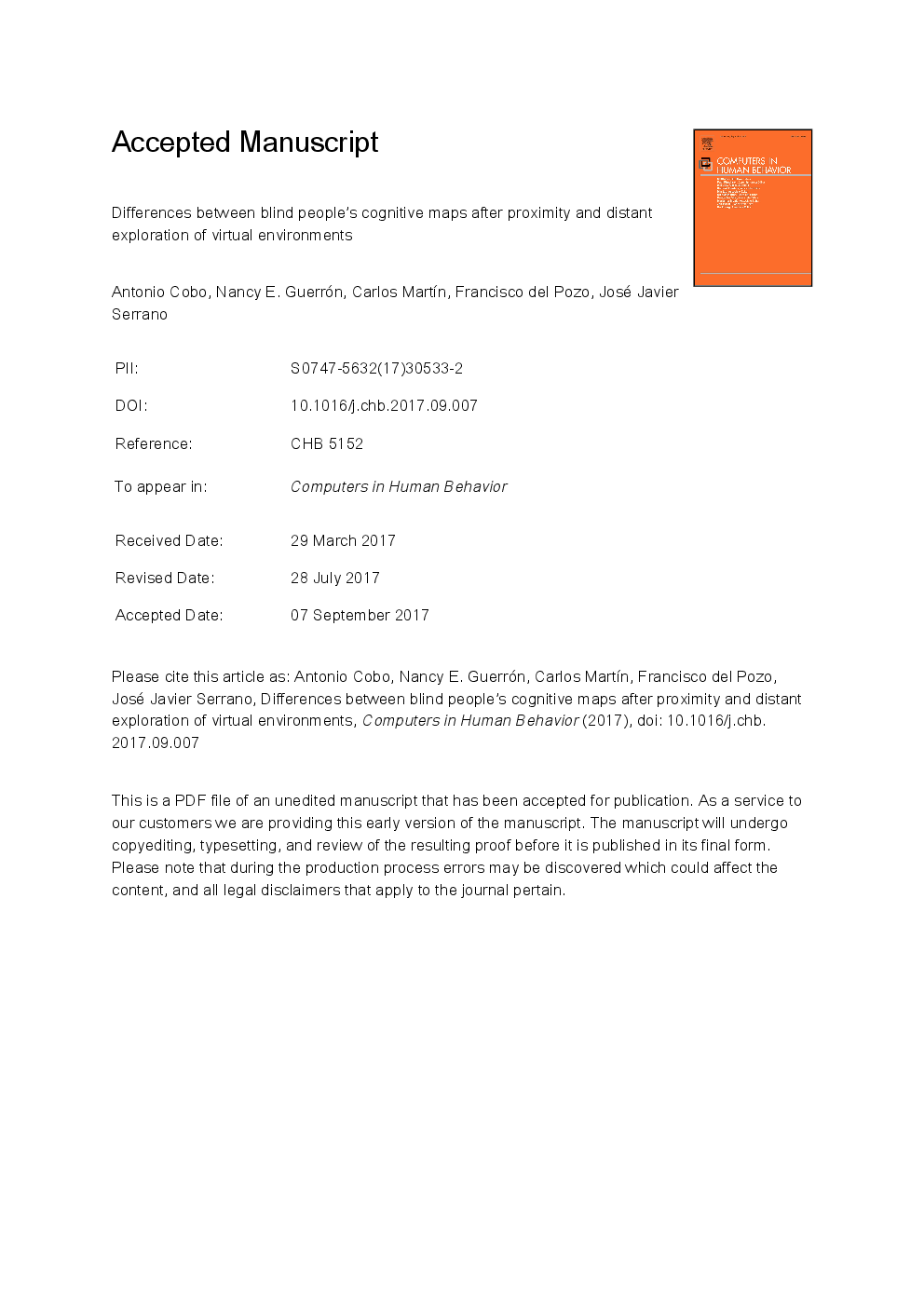ترجمه فارسی عنوان مقاله
تفاوت میان نقشه های شناختی نابینایان پس از نزدیکی و کاوش دور از محیط مجازی
عنوان انگلیسی
Differences between blind people's cognitive maps after proximity and distant exploration of virtual environments
| کد مقاله | سال انتشار | تعداد صفحات مقاله انگلیسی |
|---|---|---|
| 107136 | 2017 | 36 صفحه PDF |
منبع

Publisher : Elsevier - Science Direct (الزویر - ساینس دایرکت)
Journal : Computers in Human Behavior, Volume 77, December 2017, Pages 294-308
ترجمه کلمات کلیدی
نقشه برداری شناختی، مردم نابینا، واقعیت مجازی، گوشی های هوشمند،
کلمات کلیدی انگلیسی
Cognitive mapping; Blind people; Virtual reality; Smartphone;

